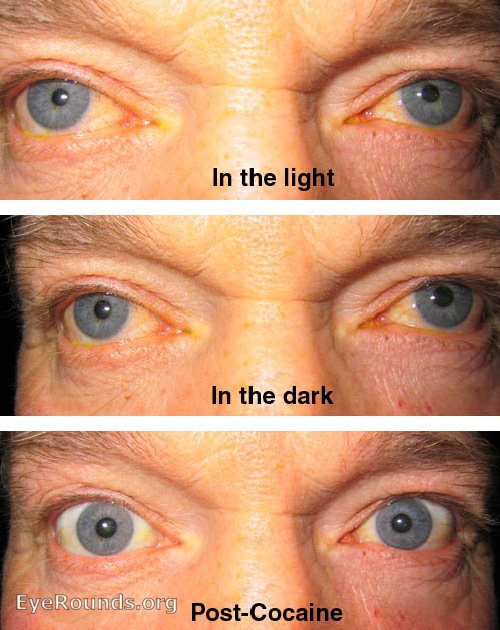1: Pupil Anatomy
- Up to 0.5 mm of anisocoria (size difference) is considered physiological
- Physiological anisocoria is the same in all light levels
- Pathological anisocoria usually varies between light and dark conditions
- Pupil size is determined by the balance between the sphincter and the dilator muscle

Source: EyeRounds.org. Contributor: Andrew Doan, MD, PhD for Sohan Hayreh, MD, PhD, University of Iowa.
Physiological Anisocoria - in the light and in the dark
